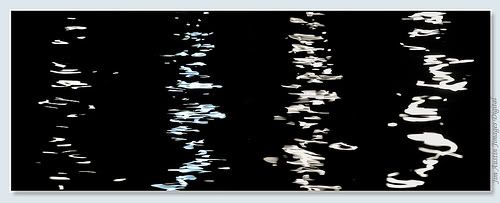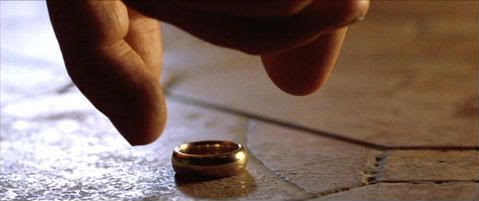Where did I say that Aman "sucks all hope towards it"?All of this works with the established Mythology. The changes are minor. With respect to Ath, the concept of an Aman-centric world sucking all hope towards it are her own devising and not Tolkiens. Attaching the sea-longing to a desire for Aman is extrapolation in the extreme
I said that the world being taken away from Aman is a loss for the world. It represents a final sundering of the Powers of the World from the world they created. It represents the most drastic consequence of Arda's marring (besides the fear of death for Men). It represents the end of the certainty of a divine presence within Eä and the beginning of the faith, often tenuous, that somewhere, somehow there remains a connection between the heavenly and the earthly.
As for the Sea-longing, I really don't believe I'm "extrapolating to the extreme". We discussed this topic in Teremia's thread over at TORC, and I wrote then:
The desire for Aman is the desire for rest, for healing, for renewal. It is the desire for a haven from the weariness and sorrows of the world. The desire for Aman is the desire for the certainty that an ending does not mean "the end".From my very first reading, this deeply profound feeling that Tolkien was able to instil with his subtle and mysterious references to the “pull” of the Sea has always been present. I remember distinctly the impact I felt at Sam’s words at the beginning of the book:
"They are sailing, sailing, sailing over the Sea, they are going into the West and leaving us."
It sounds unsettlingly close to a dirge, doesn't it? And yet, now I see it as essential to “setting the mood” as well as “setting the stage” for a tale about endings, and that which is beyond endings.
To me, the "Sea longing" is symbolic of both losing and gaining, leaving and returning, and yes, even death and renewal. There is a simple taoist saying: "You cannot gain one thing without giving up another." Is this really not at the heart of the bittersweetness of Frodo's departure? Of what makes Galadriel's lament at once both beautiful and sad? Of why we somehow know that the "sigh and murmer of waves on the shores of Middle-earth" that Sam carries in his heart will be the source of his greatest hope and his deepest pain? Is this not, as well, closely akin to the sorrow and the hope that Aragorn speaks of before he "gives back the Gift"?
That, in longing to leave Middle-earth, one can still love it deeply, that the leaving is not triggered by fear or loathing or bleak despair, but by the more gentle burdens of Time and the unavoidable weariness it lays upon body and soul, is, I believe, an extremely important foundation of the story. Legolas is “troubled” by what the gulls have stirred in his heart, not because it is compelling him to leave (as his companions misinterpret), but because it has awakened him to the realization that he, like us, like all beings tied to Time, must face some sort of ending, and one day bid farewell to that which is known and loved, that which is precious.
Al, I think this concept would work for the greater part of the myth. Ulmo's role, I believe, would have to be significantly altered as his "dwelling place" would not fit a round world construct. Arda itself, I would argue, becomes more "ordinary" when the unique integrated workings of the spherical cosmos are lost (all those substances that are not "of the earth" and yet connect the earth with all the other realms of Eä). And the Straight Path would not be a memory of the world, a road remembered in the "collective consciousness" of its inhabitants.Alatar wrote:Please, without resorting to vague concepts of the "axis mundi", explain to me where this concept could not work with the established works of Tolkien.
And BTW, I don't think the concept of axis mundi is at all vague. It is a central idea to most of the myths and religions of the world. It is why certain hills and mountains and trees and rivers are considered sacred places, or portals to enlightenment. It is Mt. Olympus and Mt. Fuji, it is Stonehenge and Teotihuacán, it is the Tree of Life and the vaulted Dome of the Rock. The Sil and LOTR are liberally peppered with symbolic representations of the axis mundi, from Cerin Amroth to Meneltarma to Valinor, reflecting, I believe, Tolkien's deep understanding of an inherent, if subconscious, human understanding of these mythological symbols.
*edited because of a second thought (or two)



